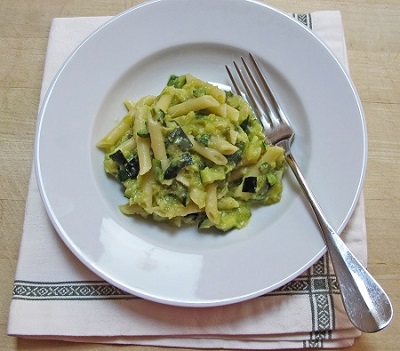 I recently returned from an idyllic week teaching at Rancho La Puerta in Tecate, Baja California. Cooking from the organic garden just outside the kitchen door, meeting new and seeing old friends, and teaching without everyday distractions puts me in a pretty blissed out state. (Join me at the ranch next year, Oct 12-19, 2013.)
I recently returned from an idyllic week teaching at Rancho La Puerta in Tecate, Baja California. Cooking from the organic garden just outside the kitchen door, meeting new and seeing old friends, and teaching without everyday distractions puts me in a pretty blissed out state. (Join me at the ranch next year, Oct 12-19, 2013.)
Under those conditions, I learn as much as I give. This particular week, I became obsessed with size. Not produce size, although that’s important: “baby” vegetables’ flavors are often not fully developed, while very large ones can be overly mature, i.e., woody or dry. On the other hand, small fruit size often signifies very concentrated flavors while overly large fruits may be an indication of over-watering and diluted flavors. Nor was I focused on uniformity of size for even cooking, which is also key.
This time it was all about the shape and size of the pot and how that alters the end product. Right, wrong, or just different? My musings were triggered by having to use someone else’s cooking equipment instead of my own, which is the situation recipe users always find themselves in.
Back home, I experimented with “melting,” one of my favorite techniques for vegetables. The idea is to cook them low, slow, and covered to release the juices, which break the veg down into a luscious mass. The 14-inch straight-sided sauté pan and the 9 ½-inch stew pot, shown above in that order, hold the same volume. Each has three chopped and sautéed leeks to which I’ve just added two pounds of diced zucchini.
I cooked both, covered over low heat, for 15 minutes. The vegetables piled deep in the pot with the smaller cooking surface (left) steamed each other, which released more juices, hastened the melting process, prevented browning, and resulted in a creamy, sweet dish that can be used as a side or as a pasta sauce. In the larger pan (right), the zucchini pieces were generally in a single layer; they browned instead of steamed, which kept the dice intact and produced a rustic, caramelized appearance and taste.
Same ingredients, same cooking technique, but two different, equally delicious dishes. All because of the size of the pot.

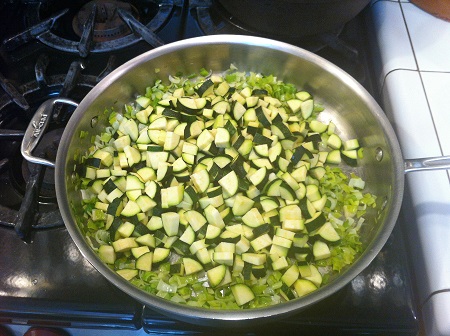
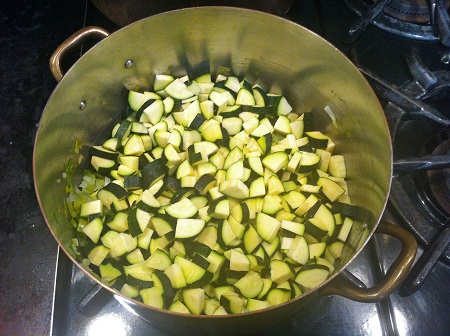
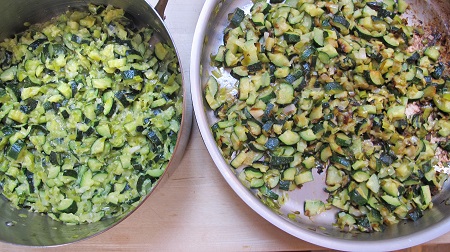
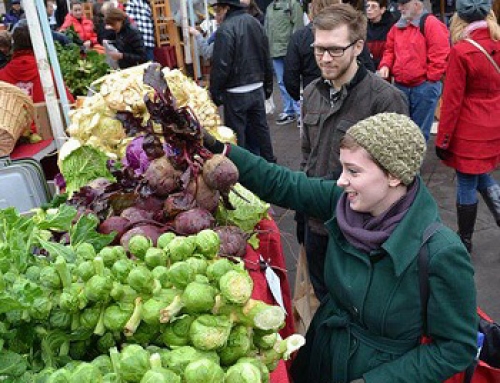
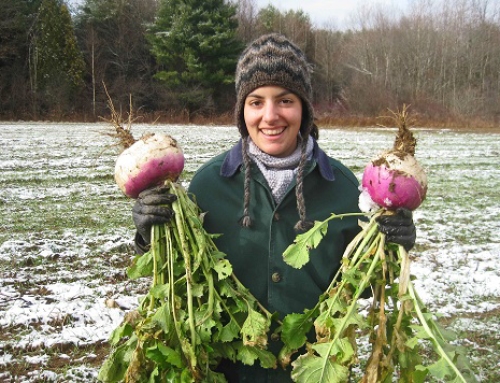
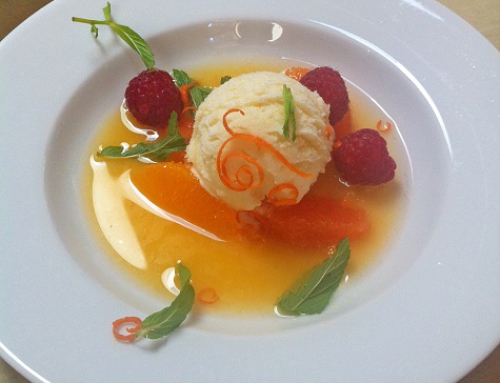

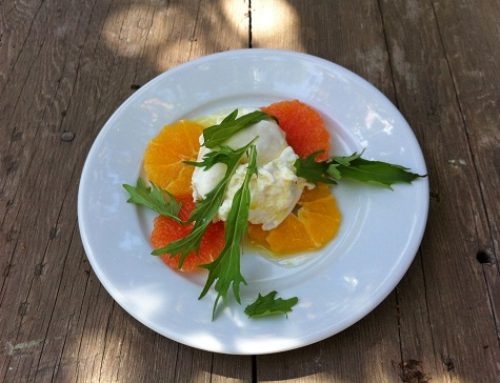
What an interesting post Amelia! I love side-by-side comparisons. I may have to go buy some more All-Clad.
Right on!
Wonderful ideas and tips as always!
Thank you so much!
Robbie
It’s amazing how simple things like that can keep a “non-cook” from feeling frustrated. But then, isn’t that true of much in life—greater awareness of details gives us insight into how small things change outcomes.
Thanks for your thoughtful comment, Barbara. What I especially like about equipment mindfulness is that this isn’t necessarily about right or wrong (of which there is too much worry in cooking anyway), but about different–different dishes produced by slight tweaks. we could go on with changing the dice to a slice or a chunk, the method to roasting and get that many more variations from one purchase!
Dear Amelia: I’ll try both methods and compare. Thanks for the inspiration!
Marie
Please let me know how the two methods work out for you!
Amelia-
I loved reading this…. reminded me of you and the ranch! I’m cooking for Thanksgiving and now am rethinking all my pots!
Nice to hear from you Amy. Meant to mention that compote recipe that we created on the spot during class is posted to the left in Seasonal Selection section. Let me know how your new “pot awareness” influences your holiday cooking!
Amelia, your thoughtful piece made me really think about cooking equipment and how it can affect the outcome of a dish.